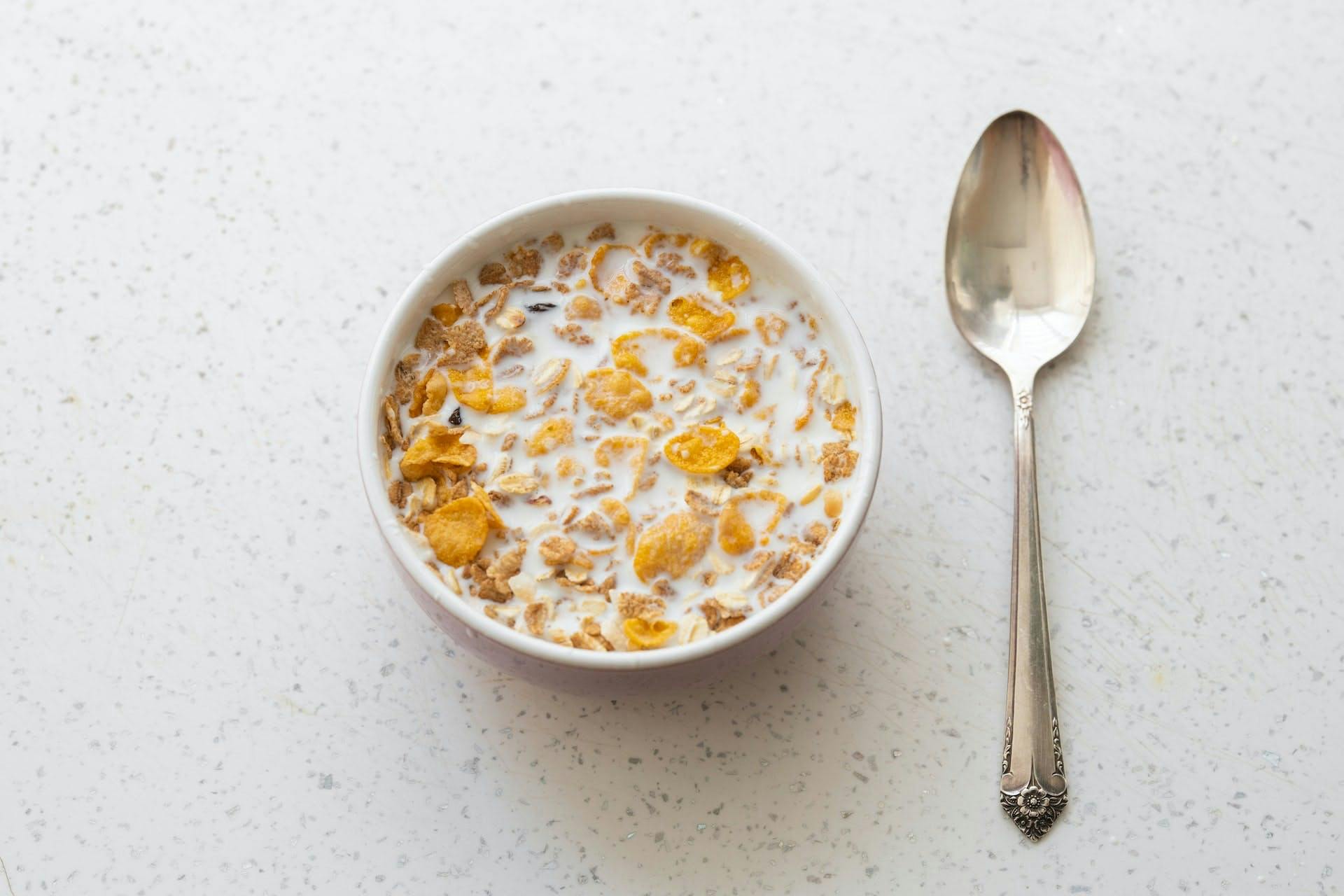In an ever-changing food market, it’s critical to understand which products are healthy and which are not — regardless of flashy packaging or persuasive health claims.
Even though a food product may be advertised as “healthy” doesn’t necessarily mean it is. This marketing strategy and use of nutrition trends and buzzwords (such as “organic,” “fat-free,” and “refined sugar-free”) produce a health halo effect that commonly misleads consumers into thinking they’ve made a healthier choice when that’s not necessarily the case.
This can pose a challenge if your health goal is to eat foods that improve your metabolic health. But just how do you demystify food packaging to make informed, health-conscious decisions about the products you’re buying? How do you avoid falling victim to the health halo effect?
What is the health halo effect?
The health halo effect is any labeling or marketing that gives the perception that a particular food is good for you, even when there is little or no evidence to support this claim [1].
While not always created to deceive, food manufacturers often use the health halo to influence consumers’ purchasing decisions. Research on front-of-package (FOP) labeling shows that nutrient content claims (such as, “organic,” “sugar-free,” etc.) can generally influence consumers to perceive foods as healthier [1]. Because of this, it’s important to identify and analyze marketing strategies like FOP labeling and understand the overall nutritional value of the food product.
Examples of common health halo terminology
Health halo terms are everywhere, but most people actually don’t know what they mean. This is by design: the words are deliberately vague and empty, so you overestimate how healthy a food or beverage is based on a single “positive” health claim.
Organic
According to a Pew Research poll, more than 55% of the U.S. population believes that organic produce is better for you than conventional produce, even though it’s often more expensive [1]. But what does organic even mean?
At its root, organic agriculture aims to maintain and improve the health of the environment (the ecosystems where food is grown) and all the living organisms involved in the growth and consumption of these foods. (This includes the tiny organisms in the soil and human beings alike) [2].
With this in mind, there are good reasons to choose organic for health and environmental concerns. However, labeling a food “organic” doesn’t simply imply that the product is nutritious or healthy, and the U.S. Food and Drug Administration (FDA) doesn't regulate the term. Organic foods are also hard to come by in many areas of the U.S., where millions of Americans lack access to fresh produce, organic or not.
Reese’s, for instance, makes an organic peanut butter chocolate cup with 13 grams of sugar per serving — less than the 22 grams in its non-organic counterpart but still more than a third of the daily recommended sugar intake [3]. At the end of the day, candy is candy. While an option with lower sugar may be better for you, the candy coming from organic sources doesn’t make it a healthy food.
Gluten-free
While “gluten-free” is a voluntary claim that manufacturers may choose to use in labeling their foods, any food product bearing a “gluten-free” claim must comply with FDA regulations. The label provides consumers with a standardized mechanism for managing their health and dietary intake – particularly those with celiac disease, a chronic immune disorder triggered by the digestion of gluten, a mixture of proteins that are naturally found in certain grains, including wheat, rye, and barley [4].
Even though gluten-free labeling is essential for those who have difficulty digesting gluten, it doesn’t signify a healthy product. With more and more people adopting a gluten-free diet even if they don’t have celiac (about 25% of the American population), food brands are taking advantage of the trend and associating a GF label with “healthy” and wheat with “unhealthy” [5].
Despite this, gluten-free alternatives to common foods like bread and crackers are often less healthy from a metabolic perspective. That’s because gluten tends to be replaced by processed carbs (like tapioca flour and white rice flour) that have a high glycemic index, which can result in bigger glucose spikes — meaning that it’s not necessarily a healthier option for people who don’t have celiac disease.
Natural
According to the FDA, the term “natural” means that nothing artificial or synthetic (including all color additives, even if they’re from a natural source) has been added to a food that wouldn’t typically contain that ingredient [6]. So natural beef jerky, for instance, means that no preservatives or artificial ingredients are added to the beef — often, the package will say that it doesn’t contain nitrates and nitrites.
But in other cases, “natural” is a free-for-all word. One example is natural peanut butter — often used to describe peanut butter that only includes peanuts (and sometimes salt) as the ingredient. But that doesn’t prevent brands like Skippy from including ingredients like palm oil, sugar, and salt in their natural peanut butter.
The FDA also doesn’t consider whether the term natural should describe any nutritional or other health benefits. Despite this, consumers repeatedly use this lingo when shaping their dietary choices — making it a prime example of the health halo effect. In fact, a 2016 survey found that 73% of consumers chose foods and beverages marked as “natural” — up from 59% in 2014 [7].
Research has also indicated that consumers are completely misinformed about what natural means [8]. In 2014, 85% of those surveyed believed that natural produce was free of pesticides and GMOs, even though the term can be used to describe non-organic, GMO produce. Similarly, animals raised with growth hormones can be called natural, despite 70% of consumers believing that this isn’t the case.
Busting the health halo
To bust the health halo, it’s critical to understand which foods are generally better for your health and evaluate other areas of food packaging, particularly the ingredients list and nutrition facts panel (NFP). These strategies will allow you to navigate through the noise of FOP labeling and help you make informed, health-conscious dietary choices.
Avoid ultra-processed foods
Not all processed foods are bad — canning, jarring, pasteurizing, and freezing are all forms of processing, so technically, almond butter and frozen berries count as processed foods.
Avoid ultra-processed foods or UPFs (typically high in sugar, fat, salt, and artificial coloring). UPFs tend to be rich in refined carbs, fat, and other ingredients that are manufactured for maximum palatability and minimal satiety — making you want to eat more and more of them without ever feeling “full.”
Many UPFs use health halo terminology to cloak the actual ingredients they contain. For example, some popular breakfast cereals like Raisin Bran, Honey Nut Cheerios, Corn Flakes are no longer allowed to market themselves as “healthy” after the USDA proposed a new definition for the term in 2022 because they don’t meet certain sugar and sodium limits or contain enough whole grains.
Shop for colorful vegetables and fruits
Instead of letting Big Food’s deceptive marketing trick you into buying a certain food or beverage, try sticking to the edges of the grocery store, where the fresh produce is.
Colorful fruits and vegetables can give your body energy — they’re rich in antioxidants, phytochemicals, flavonoids, and polyphenols — all of which have been shown to provide protective or disease-preventive properties and improve your body’s ability to regulate glucose. They’re also a great source of dietary fiber, which promotes the feeling of satiety and has beneficial effects on gut health, postprandial (post-meal) glucose levels, insulin sensitivity, and more.
Learn how to read food nutrition labels
Understanding and using the Nutrition Facts label can help you make healthier eating choices and identify nutrient-dense foods for a healthy diet. This is especially important since many consumers have difficulty interpreting nutrition labels, a form of inadequate health literacy associated with adverse health outcomes, such as poor health status, poor health management, more frequent emergency department visits, and unhealthy diets [9].
When examining a nutrition facts label, it’s best to:
- Start with the serving information on the top. This will help you determine the size of a single serving and total number of servings per container.
- Limit certain ingredients. Ingredients to steer clear of include trans fats and hydrogenated oils (such as palm oil), artificial flavors, colors, sweeteners (such as high-fructose corn syrup), and preservatives (such as sodium nitrate).
- Look out for added sugar. The nutrition label requires food manufacturers to list added sugars on the package below total sugar. While some foods have naturally occurring sugar, it’s the added sugar you should look out for, especially in packaged foods like snacks, beverages, protein bars, and sauces. Added sugars are refined and offer no nutritional value — they’re just empty calories. Look to limit your intake of foods high in added sugar.
- Aim for high fiber. Fiber is an excellent nutrient for metabolic health. It can slow the absorption of glucose in the bloodstream, preventing your glucose from spiking post-meal. Look for foods with over 5 grams of fiber per serving to ensure you’re getting adequate fiber and making good food choices for glucose control.
Key Takeaways
We are all victims of Big Food’s health halo marketing strategies, but by increasing your awareness of their tactics and learning how to decipher if a product is healthy or unhealthy, you’ll be empowered to make choices that will make you feel your best and increase your metabolic healthspan.
- If you see any of these words on the front packaging of a food or beverage, flip it over to read the ingredients and nutritional panel: organic, gluten-free, natural, fresh, low-fat, non-GMO, whole grain, vegan, sugar-free, fortified.
- Avoid ultra-processed foods, which tend to be high in sugar, fat, and salt and are engineered to make you want to eat more without ever feeling satisfied.
- In an ideal world, the bulk of your grocery shopping should take place at the edges of the grocery store — where the fresh produce is — rather than in the middle aisles. Eating lots of colorful fruits and vegetables is a key way to get enough fiber (which is crucial for metabolic health) and micronutrients.
- When choosing among different brands or similar products, compare food labels and ingredient lists and choose those with more whole, plant-based foods rather than products that include added sugars, high-fructose corn syrup, trans fat, sodium, and more.
References:
- https://www.pewresearch.org/science/2016/12/01/americans-views-about-and-consumption-of-organic-foods/
- https://www.ifoam.bio/our-work/what/health
- https://www.heart.org/en/healthy-living/healthy-eating/eat-smart/sugar/how-much-sugar-is-too-much
- https://celiac.org/about-celiac-disease/what-is-celiac-disease/
- https://news.unl.edu/newsrooms/today/article/study-concludes-americans-self-diagnose-to-adopt-gluten-free-diets/
- https://www.fda.gov/food/food-labeling-nutrition/use-term-natural-food-labeling
- https://www.consumerreports.org/media-room/press-releases/2016/05/consumer-reports-survey-show-73-percent-of-consumers-misled-by-natural-labels-at-the-grocery-store/
- https://www.usatoday.com/story/money/2014/06/17/natural-food-labels-no-meaning/10674755/
- https://pubmed.ncbi.nlm.nih.gov/21768583/


